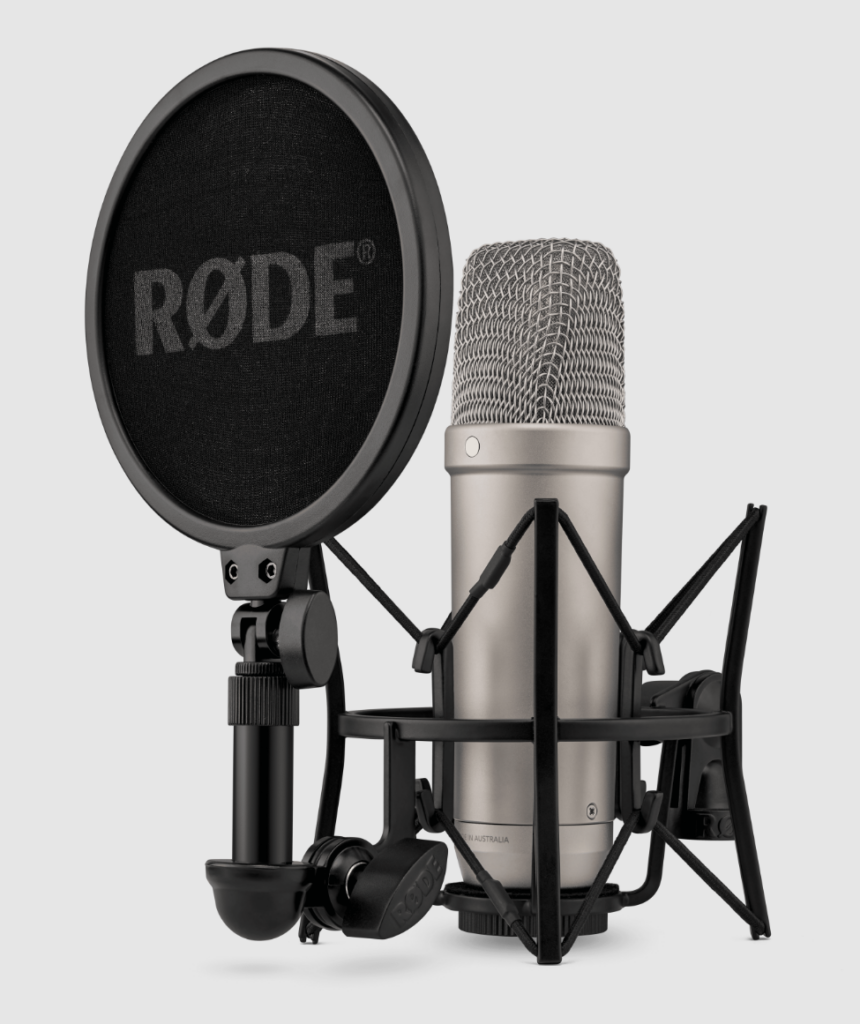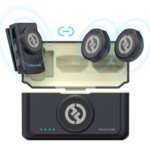The best USB microphones are the best choice for most people. Mainly because they are simple to use – just plug the mic in and you’re good to go. Another reason you may want to pick these microphones is that they help you produce the best audio possible.
As such, whether you podcast for a living, live stream your gaming routine for a hobby, or just take lots of meetings in a noisy environment, the best USB microphones have you covered. Even those who haven’t used a mic before can expect excellent results.
In this article, we have researched and hand-picked the top () USB microphones on the market. On top of that, we’ve included some in-depth buying advice for those of you who like to know more about USB mics and factors to consider when buying one.
| Blue Yeti | JLab Talk | Rode Podcaster | Rode NT1 5th Gen | Monoprice Dark Matter | Shure MV7 | Blue Yeti X | Hallyland Lark M2 | |
| Price | $129.99 | $47.9 | $196.90 | $249 | $99.99 | $249 | $139.99 | $159 |
| Sensitivity | N/A | 9 dB | 2 dB | 2 dB | ‑36dB ±2dB | N/A | N/A | 115 dB |
| Impedance | 16 ohms | N/A | 32 ohms | 100 ohms | 32 ohms | 314 ohms | 16 ohm (headphone amplifier) | N/A |
| Weight | 220 g | 215 g | 655 g | 308 g | 220 g | 550g | 519 g | 9 g |
| Polar Pattern | Bidirectional; Cardioid; Omnidirectional; Stereo | Bidirectional; Cardioid; Omnidirectional; Stereo | Cardioid | Cardioid | Bidirectional; Cardioid; Omnidirectional; Stereo | Cardioid | Bidirectional; Cardioid; Omnidirectional; Stereo | Omnidirectional |
| Frequency Response | 20Hz to 20KHz | 20Hz to 20KHz | 40Hz – 14kHz | 20Hz to 20KHz | 20Hz-20kHz | 50Hz to 16Khz | 20 Hz – 20 kHz | 20 Hz to 20 kHz |
| Warranty | 2-year limited | 2-year limited | 10-year | 10-year | 1-year | 2-year | 2-year limited | 1-year |
Blue Yeti USB Microphone

Despite being on the market since 2009, the Blue Yeti continues to set the bar for USB microphones. Part of the reason for that is its looks. An elegant and simple design makes you feel as if you’re recording in a studio, even when you’re out there on the road.
Another reason content creators love this microphone is that its sound quality complements the professional-looking aesthetics. Thanks to three internal condenser capsules, the Yeti is capable of capturing a very detailed, crisp, and clear sound.
You may also find it good to note that all the controls needed to tweak its output are onboard. They include a mute button, gain switch, volume knob, and a switch for the four polar patterns. No need to install fancy software to carry out the basic stuff.
To further sweeten the deal, it’s a breeze to set up – just plug in the USB cable from the mic to your computer and you’re good to go. Its build quality is equally inspiring. It can survive many falls with nothing but minor dings as proof of the abuse being meted out.
Best of all, this mic isn’t a one-trick pony. You can use it for Zoom meetings, podcasts, voiceover recordings, gaming, and recording live equipment and get professional-quality audio every single time. Not many models in the same price range are as versatile.
Pros
- Reasonably priced
- Has a tough build
- Good recording quality
- Fairly easy to use
Cons
- Sensitive to bumps/shocks
- Lacks a built-in pop filter
JLab Talk

The JLab Talk challenges the Blue Yeti on several counts. The first of which is price, with this USB microphone costing $40 less than our top pick, despite offering comparable audio quality. This makes it a more appealing option for users on a tighter budget.
Next comes simplicity of use. The Talk boasts a formidable main dial to let you seamlessly pick between the four polar patterns – cardioid, omnidirectional, stereo, and bidirectional. Beneath it sits a smaller dial that controls microphone gain and output volume.
Then there is the recording quality, with the Talk supporting 24-bit recording sampling, whereas the more expensive Yeti only supports 16-bit sampling. The result? More flexibility when mixing and mastering as well as a lower risk of clipping when recording audio.
Despite leading the Blue Yeti on all the above counts, the JLab Talk isn’t our top pick for USB microphones. Want to know why? It doesn’t come with any dedicated software. You’d thus have to invest in a program if you’re into mixing, fine-tuning, and adjusting.
Pros
- Comes at an affordable price
- Offers excellent recording quality
- Lightweight yet sturdy build
Cons6
- No dedicated software
- Can pick up background noise
Rode Podcaster

The Rode Podcaster may not be as pocket-friendly as our top two picks, but makes up for the added price with its simple operation and superb audio quality. Plus, an all-metal chassis should convince the naysayers that this microphone is built to last.
To reduce popping sounds from vocal performances, it employs an internal pop filter. Also on the inside is a 28mm neodymium dynamic capsule, which keeps this mic from picking up vibrations. The result? Crystal clear audio with little distortion.
In terms of controls, an LED is present on the body. It lights up orange when the mic signals are below peaking, and red when they have peaked (green is the color you should aim for).
What’s missing? An onboard gain knob, meaning you have no choice but to turn to your computer to adjust recording levels. To make up for it, Rode offers a 3.5 mm jack for headphones as well as a rotary dial for controlling your headphone’s volume.
Pros
- Will last years if used properly
- Handles plosives extremely well
- Offers a solid signal with rich low-mids
- Zero latency headphone jack
Cons
- Pricey
- No gain knob
Rode NT1 5th Generation

The Rode NT1 5th Generation is one of the few microphones in our review with both digital (USB) and analog (XLR) inputs. Why should that interest you? Because it means that it’s an equally good match for studio, home, as well as outdoor recordings.
Many users don’t know that the USB-C connection on the mic offers 32-bit floating point A/D conversion. This means that if you’re recording audio and the sound accidentally gets too loud, the mic would still salvage it, saving your audio from getting ruined.
Another thing that impresses its users is that this microphone comes with lots of extras, including a high-quality shock mount with replacement bands, USB and XLR cables with Velcro straps, an external pop filter, and a bag to store the entire paraphernalia in.
You also get several apps alongside this mic, our favorite among which is the Rode Central. That is because it lets you make many usable tweaks to the audio, such as adjusting the DSP settings, turning the noise gate on or off, and adjusting the frequency ranges.
Pros
- Comes with XLR and USB inputs
- Box has everything you need to get started
- Solid digital signal processing options for USB mode
Cons
- No on-body controls
Monoprice Dark Matter Sentry Streaming Microphone

The Monoprice Dark Matter Sentry Streaming Mic might be more pocket-friendly than other equally famous USB headphones. But thanks to its multidirectional condenser, you get high-quality audio with a natural tone, a rarity for models in this price range.
We also like its onboard controls, which include control knobs for headphone volume and gain, a 3.55 mm headphone jack, and a mode button. The mode button lets you pick between cardioid, stereo, omnidirectional, figure-8, and omnidirectional recording patterns.
In all the recording patterns, the mic sounds natural, with little self-noise. That said, if you’re into podcasting, the figure-8 (aka bidirectional) mode will come in handy, with the stereo mode offering a more environmental feel, making it better for outdoor recordings.
Finally, pick the omnidirectional mode if you record vocals in a deadened room, as it picks up a signal from all directions equally. Because of its clean signal, you’d be able to get some rich, crisp captures from a close distance without a pop filter, especially if your mic technique is solid.
Pros
- Comes at a pocket-friendly price
- Offers multiple audio patterns
- Loads of useful onboard controls
Cons
- Stand is prone to picking up computer sounds
Shure MV7

If you watch lots of podcasts or YouTube videos where two people talk face-to-face, you’re very likely to have already seen the Shure MV7 in action. Many of the world’s famous pop singers have also confessed to using it in the studio. That’s how popular (and good) it is.
Why is that the case? The MV7 sounds fantastic, even when you compare its audio quality with USB microphones costing twice as much. Secondly, it comes with an internal shock mount. That means you don’t have to fear about the audio getting ruffled.
Thirdly, this mic is built to last forever. A metallic grille combined with some sturdy onboard controls enables it to take quite a few beatings before giving up. You may also appreciate the fact that it houses a headphone jack alongside an XLR and USB output.
Turn to the USB output if you want to preserve a low-resolution audio file, as the XLR output works better when dealing with a high-res output for reference. Lastly, if you want to get the most out of this USB mic, it’s recommended to download the companion app.
Pros
- Side-by-side XLR and USB outputs
- Excellent vocal reproduction
- Superb build quality
- Offers clean, crisp sound
Cons
- A bit on the heavier side
- Asking price may blow a hole in your pocket
Blue Yeti X

Introduced in early 2020 as an upgrade to the Blue Yeti, the X improves on its best-selling predecessor on multiple counts. For starters, its resolution is 24-bit/48KHz, compared to the Yeti’s 16-bit/24KHz. This bump helps it capture sound more accurately.
Next comes the fact that the Yeti X has four condensers, compared to the Yeti’s three. The condenser’s job in a microphone is to convert sound waves into electric signals. As such, having four instead of three should translate into greater audio clarity.
You also get extra options upon pairing the X with the Logitech G Hub desktop Software, including additional vocal effects and ring colors. Also, the LEDs on X act as a meter, helping to avoid overloading the mic when recording or streaming.
All of this is not to say that the Yeti is doomed now that the X has hit the market. Most listeners won’t be able to tell the difference between the former’s 16-bit audio and the latter’s 24-bit audio, making Yeti a better deal (at least in our opinion) for casual users.
Pros
- Offers strong audio quality
- Recording software included in the package
- LEDs help you avoid overloading the mic
Cons
- Blue VO!CE recording software isn’t available on macOS
Hollyland Lark M2

The Hollyland Lark M2 is a wireless mic that comes with a camera, lightning port, and multiple USB-C receivers. Despite that, it costs only slightly more than the classic Blue Yeti, making it an excellent option for content creators on a tight budget.

2-Person Wireless Mini Button Microphone.
One of this wireless mic system’s main selling points is that it’s compact and lightweight. Another is that it’s incredibly easy to use – just plug in the receiver, clip on the mic, and you can begin recording.
Another thing that caught our eye is its impressive battery life of about 10 hours, meaning you can count on it to last most shoot days. And if you still somehow run out of power, the included Charging Case will juice the system back up within a few hours.
Lastly – and most importantly for an audio system – the Lark M2 microphones sound amazing. A built-in noise cancellation system does a phenomenal job of reducing unwanted background noise, while the supplied windshield (if correctly installed) averts the rumble of wind noise.
Our only criticism is that there is no display to show the remaining battery life. Other than that, this audio solution is free of any deal-breaking flaws.
Pros
- Boosts excellent battery life
- Not overpowered by background noise
- Excellent audio quality – crisp and clean voice
Cons
- No display included to show remaining battery life
Things to Consider when Buying USB Microphones
Polar Patterns
USB microphones, unlike traditional XLR mics, have built-in controls to let you switch between polar patterns. You can pick from cardioid (captures sound from one direction only), omnidirectional (picks up sound from all directions), or bidirectional (picks sound from two different directions).
To choose the right polar pattern, think about how you’re planning to use the mic.
For instance:
- If you do solo podcasting or singing, a cardioid pattern may work best for you.
- If you do group interviews, an omnidirectional pattern may be a better choice.
- If you do one-on-one interviews in a studio, a bi-directional pattern might suit you more.
Connectivity
How do you intend to connect your microphone to your computer?
Some USB microphones offer USB-A ports as they work with most computers, especially desktops. However, while USB-A ports are widely compatible, their transfer speeds aren’t the fastest.
Which is why most of the latest USB-equipped mics come with USB-C ports. Besides offering faster data transfer speeds, USB-C microphones can also draw power directly from your computer’s USB port. This means you may not have to invest in a separate power supply.
In case you want to cut the cord, opt for wireless USB microphones. Although less common than their cord-carrying counterparts, they offer more freedom of movement.
Headphone Jack
Make sure your USB microphone comes with a built-in headphone jack.
A built-in headphone jack helps the microphone capture sound with zero latency, meaning you’d be able to hear everything being recorded with zero delay. This, in turn, will help you adjust the microphone’s volume and placement in real time for the best sound quality.
Sample Rate and Bit Depth
If you have loads of storage space on your computer for your recordings, go for USB microphones with higher sample rates (like 48kHz or 96kHz) and bit depths (16-bit or 24-bit). USB mics with these ratings can capture more detailed sound, offering clearer recordings.
Gain Control
Pick microphones with built-in adjustable gain control. This allows you to adjust how the microphones capture sound in various settings without needing separate software.
For example, if you’re recording something quiet, like a soft instrument, you can turn up the gain to help the microphone pick it up clearly. Conversely, if you’re recording in a noisy environment, turning down the gain knob will keep the audio from getting distorted.
Frequently Asked Questions
Which is better USB or XLR microphones?
USB microphones are generally better for beginner podcasters, solo content creators, or those on a tight budget. That is because they are extremely easy to set up, don’t require additional mixers or audio interfaces, and are more affordable vis-à-vis XLR microphones.
Are USB mics good for vocals?
USB microphones can be an excellent choice for recording vocals, especially for podcasting, voiceovers, home recording setups, and amateur music production. Also, since they are compact and lightweight, USB mics can be beneficial for anyone who records vocals on the go.
Are USB dynamic mics good?
USB dynamic microphones can be an excellent choice for musicians who record or perform in noisy environments. That is because they are robust, can handle high sound pressure levels (SPL), and are less likely to pick up ambient noises.
Conclusion
Whether you’re a veteran YouTuber, a gaming enthusiast, or a seasoned podcaster, you cannot deny one thing: audio quality matters. As such, if you desire great sound, it’s imperative to invest in the best USB headphones, many of which we have discussed above.
Why trust our picks to take your audio game to the next level? We have only recommended those products that have the trust of hundreds of content creators. You can thus count on the above models to not only meet but exceed your expectations.




